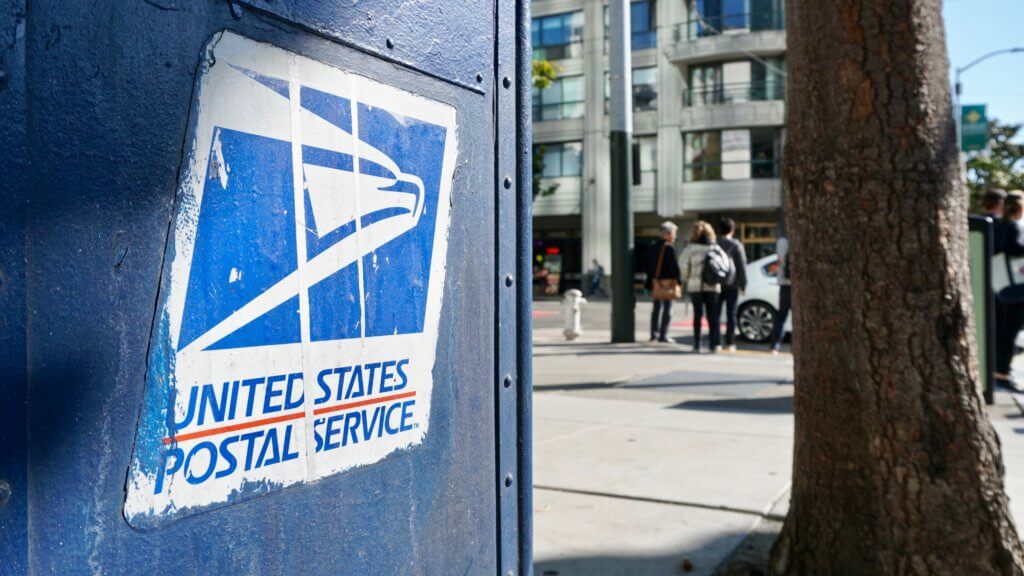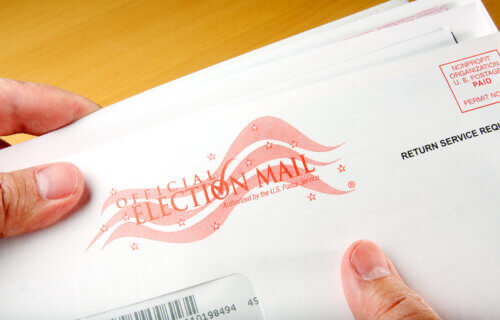PULLMAN, Wash. — Who your state votes for in an election may depend on how good your local mail service is. It’s hard to find a unifying trend across the entire country come Election Day, but researchers from Washington State University report both red and blue states see increased voter turnout when the mail is moving more efficiently.
Researchers analyzed election data from 2012 to 2020 for this study. The COVID-19 pandemic led to many more mail-in votes than usual, so study authors were sure to include this time frame. Generally, they discovered that more accessible mail voting laws, like universal mail-in voting or no-excuse mail voting, increased the probability that people would vote. On the other hand, restrictive laws, like requiring a witness’s signature or identification for mail-in ballots, discouraged votes.
However, even in states with restrictive laws, a faster postal service helped increase voting likelihood, resulting in a 3.42-percent higher voting probability.
“Across the board, this study shows that having better postal administration makes it more likely there will be more positive voter turnout outcomes linked to all mail voting laws,” says Michael Ritter, lead author of the study, in a university release. “But in states that have the most restrictive mail voting laws, having better postal administration makes a huge difference – it may not seem huge, but for individuals who sometimes are on the fence about voting by mail or not voting at all, it can tip the balance.”
To conduct this research, Ritter crafted models for estimating the probability a person would become a voter during the 2018 and 2020 elections in connection with mail voting laws and postal service efficiency. The models were made up of data from midterm and presidential elections spanning 2012 to 2020, mail voting laws in every state, and the estimated efficiency of local postal services based on their average, on-time, first-class mail delivery (which can vary by zip code).

Researchers add that the speed of local mail essentially determines whether a ballot arrives in time to be counted or not. Other projects have suggested a “non-trivial” number of mail ballots were not counted during the 2020 election due to this exact issue.
The study notes that among states with the most restrictive mail voting laws, like Alabama, the chance of a resident voting was 62 percent. That statistic is lower than in states with universal all-mail voting, like Washington, Oregon, Utah, and Colorado. Residents of states with accessible mail voting laws had a 70-percent likelihood of becoming a voter in 2018 and 2020. Meanwhile, for the 33 other states with no-excuse absentee laws (voters are free to request a mail-in ballot for any reason), the probability was 65 percent.
Moreover, the research team adds that “cure” laws help encourage more voters, increasing probabilities by as much as 3.2 percent. Such laws allow officials to get in touch with voters if there are problems with their mail-in ballot, such as a missing signature, giving citizens a chance to correct any errors and have their vote counted.
The U.S. Postal Service saw major disruptions in 2020. First, the COVID-19 pandemic led to huge numbers of people voting by mail – all while the postmaster general at the time was reducing the number of postal processing machines. Then, the 2020 Presidential election saw President Trump claim that mail-in voting was rife with fraud. Ritter notes that numerous studies have shown that voter fraud of all kinds in the U.S. is actually quite rare.
Even today, with the pandemic largely over and a new administration in office, disputes over mail-in voting will likely continue, Ritter explains. All in all, the post office plays a big role in U.S. elections, for better or worse.
“Mail voting is very popular for the elderly, the disabled and even for individuals who just simply want more convenience to cast a ballot,” the study author concludes. “My research and research from others in the field have indicated that mail voting is a key driver of higher turnout, so it will likely continue to be very pivotal in the 2024 election.”
The study is published in Election Law Journal Rules Politics and Policy.
You might also be interested in:
- American society becoming more liberal than 50 years ago, but voting for more Republicans
- Political apathy: Parents may be passing down disinterest in voting to their kids
- Improving the voting rate won’t lead to less crime, study finds

